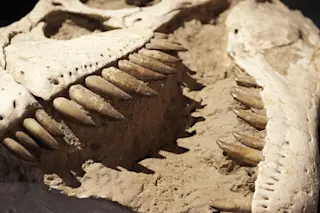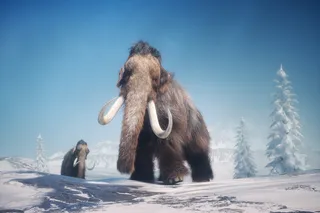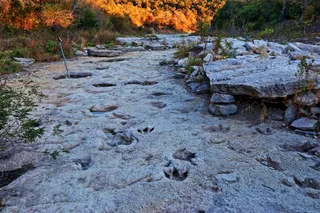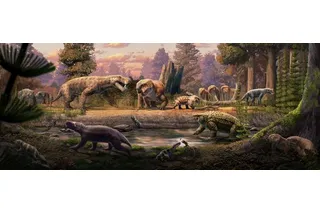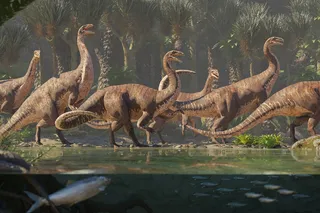Some 1.7 billion Tyrannosaurus rex dinosaurs once roamed the earth, according to a new paper. But that wasn’t all at once – the paper’s model estimates that only 19,200 were alive at any one time, a more fitting number considering their role as top predators.
The study follows research from 2021 that pegged the total number of T. rex dinosaurs at 2.5 billion. But the new paper’s author, Eva Griebeler – an evolutionary ecologist at the Johannes Gutenberg University Mainz – revised key portions of the 2021 study’s underlying model.
Kings of the Dinosaurs?
The T. rex was a powerhouse during its lifetime, capable of eating prey the size of school buses with teeth the size of your forearm.
The king of the dinosaurs may have measured up to 40 feet long and 12 feet tall and weighed 15,000 pounds. It weighed so much, in fact, that it may have run at a relatively pokey 10 miles per hour, about the same as a human sprinter.
It's also hotly debated that the T. rex had come from three different species – T. imperator, T. rex, and the smaller-boned T. regina. Some researchers say that condensing the fossil record into a single species didn’t make sense. While others claim there are a number of technical issues with the three-species model.
Read More: Is the T. Rex Three Different Species?
How Many Roamed the Earth?
Like the proponents of the three-species hypothesis, Griebeler has challenged the T. rex precedent. She's worked singlehandedly to revise the previous estimate of how many T. rexes roamed the planet.
Both studies relied on certain variables and assumptions, such as the number of known T. rex fossils (32), the oldest T. rex ever found (28 years) and the onset of sexual maturity (about 16 years). And further, they both required the authors to somehow estimate the life-expectancy of a newborn T. rex and the reproductive rates of adults.
But in the new research, Griebeler made key distinctions: She modeled the T. rex’s reproductive rates after those of other egg-laying species, reptiles and birds. She also reduced the all-important life expectancy figures for newborn T. rexes to something more in line with living species.
As a result, she estimated that 1.7 billion T. rexes had lived across 96,800 generations, meaning the dinosaur would have been present on earth for 2.03 million years, which lines up neatly with previous estimates.
Notably, scientists have recovered only a tiny fraction, 32, of the 1.7 billion T. rexes estimated to have lived, raising new questions. Did so many bones decompose? Many must have – fossilization occurs only rarely, when minerals from surrounding sediments seep into bones and prevent them from breaking down.
Read More: New Dinosaur Species Could Explain Tyrannosaurus Rex Evolution


